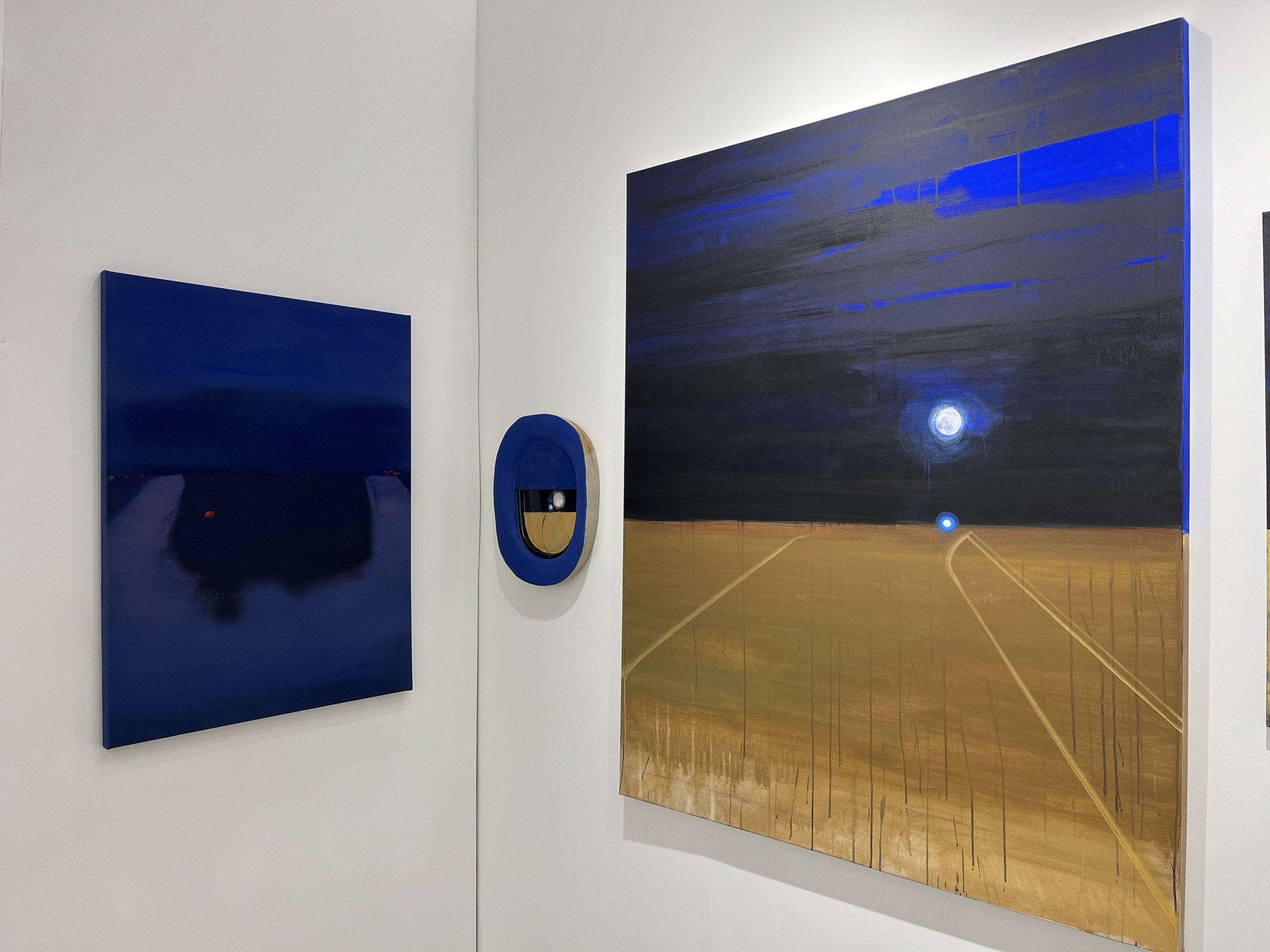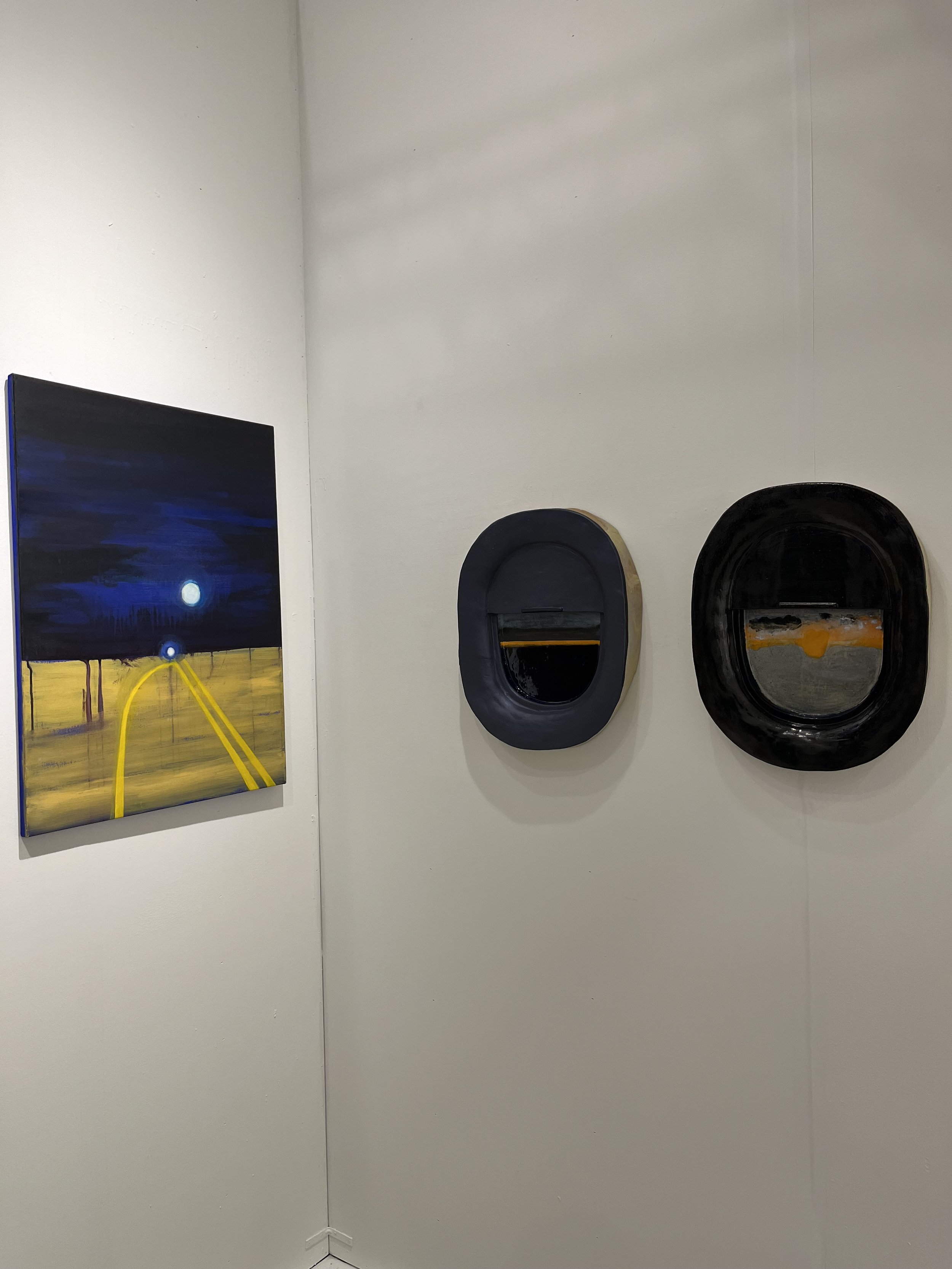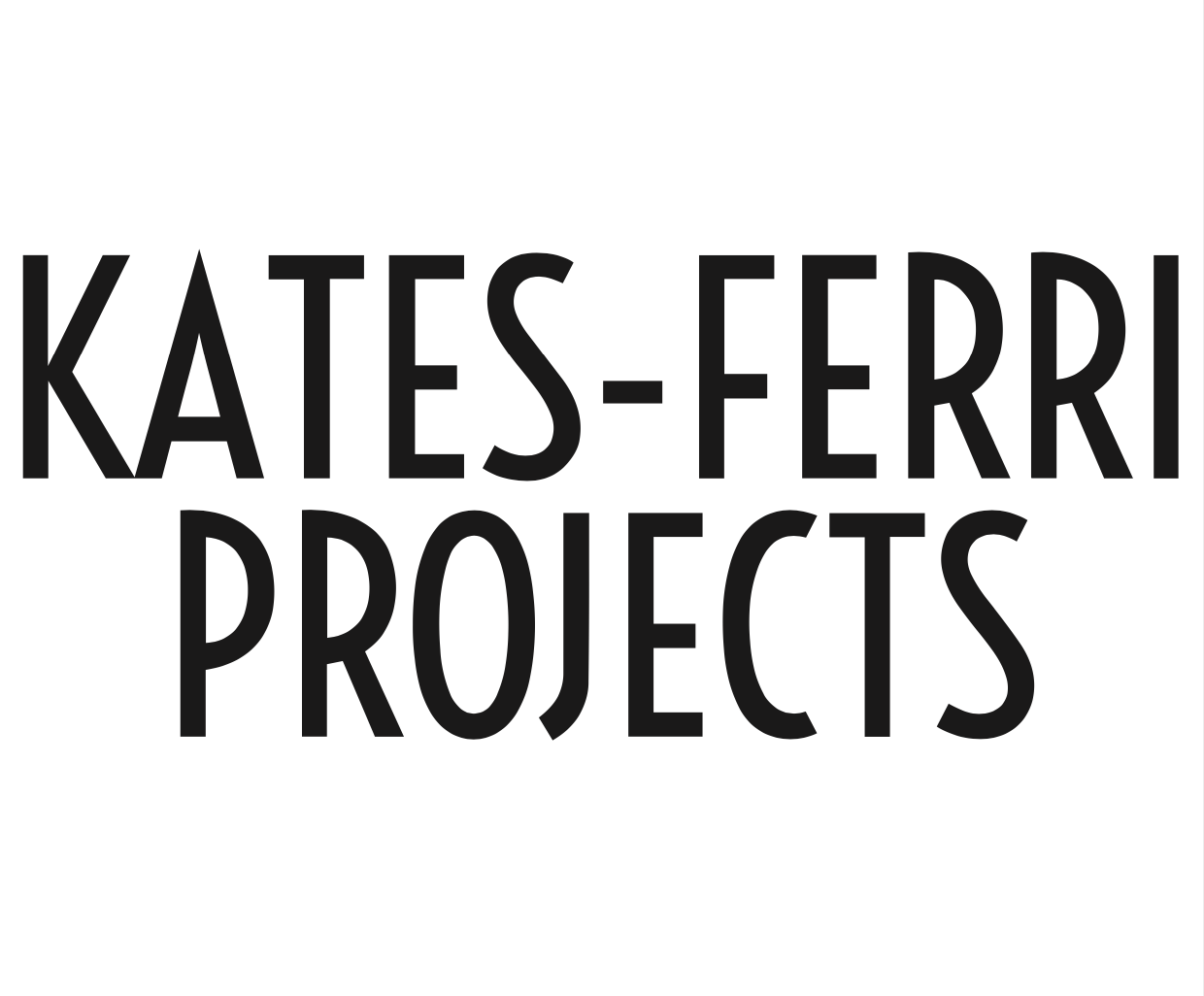#047 We Are Day And Night: C.J. Chueca
NADA NY Projects P37, 548 W. 22nd Street, NYC 10001 May 2 - May 5, 2024



















KATES-FERRI PROJECTS is excited and proud to announce its first ever participation at NADA New York Project, with a solo presentation of the works of Peruvian conceptual artist C.J. Chueca, , titled “We Are Night and Day” and on view May 2 to 5, 2024 at 548 West 22nd Street, NY 10001 (Booth #P37).
On view will be a combination of hand-built ceramic airplane windows and acrylic paintings, both aimed at exploring concepts of migration, traveling, transformation and manmade borders.
The choice of materials and the subject matter suggest a deep reflection on the human experience of migration and the impact of borders on individuals and societies. Ceramics, with their tactile and durable nature, and their propensity to crack, symbolize both the fragility and the resilience underlying the migration experience. Also, we are all familiar with ceramics as they are part of the tradition of many cultures around the world. Thus, their materiality itself connects to, and awakens the viewers’ memories.Chueca’s ceramic airplane windows serve as portals to horizons left behind or perhaps waiting us ahead, each window reflecting the perennial traveler’s transition between different physical and emotional places. In a similar mood, the acrylic paintings capture airport runways (spaces of departures and arrivals) and nocturnal views from above of territories where manmade borders and boundaries are no longer visible. Together, the two bodies of work contribute to create a cohesive and dynamic visual narrative.
The thematic focus on migration and borders is personal to the artist. As she explains, “I have been a nomadic being since I was born. I moved to New York in 2003. Before this period, I lived in different houses in Lima and in my first years of life I lived in Mexico City and Oaxaca. My father migrated to Lima – the capital of Perú – from a small town called Muquiyauyo-Jauja, located in the high mountains of the Andes. My mother's father was an orphan who traveled in a warship and eventually found a putative father in Valparaiso, Chile. My history, and the history of my family of perpetual immigrants has led me to explore the concepts of home, territory, transition, multiculturality, uprooting and solitude.”
Kates-Ferri Projects and C.J. Chueca would like to engage viewers in a thought-provoking exploration of the notion of human migration and its complex social, political, and cultural implications in today’s societies.
C.J. Chueca was born in Lima, Perú and moved to New York in 2003.
Since 2015 I started to name myself C.J. Chueca – an abbreviation of Cecilia Jurado Chueca –, which marked the beginning of a new journey in my artistic practice. I have lived in New York since 2003. I spent the first years of my life in Mexico City and Oaxaca, and then lived in different houses in Lima. My father migrated to Lima – the capital of Perú – from a small town called Muquiyauyo-Jauja located in the high mountains of the Andes. My mother's father was an orphan who traveled in a warship and eventually found a putative father in Valparaiso, Chile. My history, and the history of my family of perpetual immigrants has led me to explore the concepts of home, territory, transition, multiculturality, uprooting and solitude. I talk about those lives that are still on the road (or without route) in the streets of the world. Eleanor Heartney writes in her essay: ““Something there is that doesn’t love a wall”: C.J. Chueca creates walls that neither contain nor separate. Instead, they provide insight into the complex ways that walls operate in our lives."
In a parallel path, I am mesmerized by the power of water, its never-ending ride, its possibility to pass through the smallest gap, its condition of eternal traveler. We are water, as we are rivers that will eventually mix with other rivers in the deepest water of the ocean. The diversity of cities like New York and Lima have inspired me to use mediums that are part of many traditions in daily basis like hand-built ceramic objects and mosaic sculptures, ceramic tiles, and painting. The blue color has been present throughout my practice for its own formal intensity and as a connector between urban life and nature.
